I admit that this time I take up this year’s PMI report very late due to project engagements, and that while I was “hawking around“ with it at my clients whom I was able to help out of some bad project distresses again this year: Look, You are not the only ones who have to catch up backlogs here !
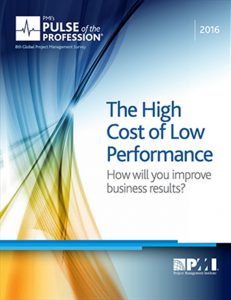 The PMI Pulse of the Profession 2016 (again) shows very clearly and easy to understand why project success, business success and good project management are directly interrelated: projects are 2 ½ times more successful (and profitable) when proven project management practices are used. It bases its argument this time as expected on PMI’s newly introduced Talent Triangle and stresses the necessity of interacting technical project management, leadership, and strategic and business management for corporate success.
The PMI Pulse of the Profession 2016 (again) shows very clearly and easy to understand why project success, business success and good project management are directly interrelated: projects are 2 ½ times more successful (and profitable) when proven project management practices are used. It bases its argument this time as expected on PMI’s newly introduced Talent Triangle and stresses the necessity of interacting technical project management, leadership, and strategic and business management for corporate success.
Unfortunately the research’s findings also show a deterioration of the project results correlated with a decrease of maturity in corporate project management: We see US$122 million wasted for every US$1 billion invested due to poor project performance, a 12 percent increase over last year !
PMI considers the reason to be anew decreasing awareness and acknowledgement for good project management practices at the Executive Management, and appeals:
- Look beyond technical skills of your project managers, and seek added skills in leadership and business management
- Recognize the strategic role of corporate project management and an enterprise-wide Project Management Office (EPMO) aligned to the company’s strategy
- Drive success with engaged Executive Sponsors
But discover it yourself – and use the study as an (additional) argumentation aid for good project management in your company. Have an inspiring reading.
To download the PMI Pulse of the Profession 2016 report, please click the PDF icon: ![]()

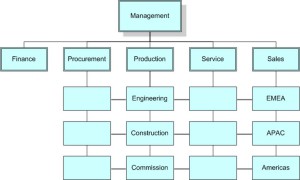 The organization no longer fits to its market
The organization no longer fits to its market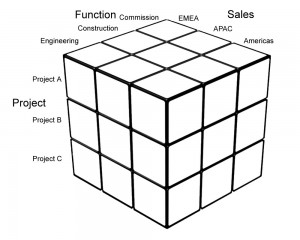 There is only help in a transformation of the organization and corporate culture concerning established hierarchies, responsibilities, compensations, thinking and priorities etc. towards an organization focused on the project business. In a pure line organization this means the change to a matrix “function vs. project”. At an already matrix-organized company it will be the implementation of a third dimension on peer-level to the existing ones. What it takes and what to pay attention to I have described in my article “
There is only help in a transformation of the organization and corporate culture concerning established hierarchies, responsibilities, compensations, thinking and priorities etc. towards an organization focused on the project business. In a pure line organization this means the change to a matrix “function vs. project”. At an already matrix-organized company it will be the implementation of a third dimension on peer-level to the existing ones. What it takes and what to pay attention to I have described in my article “



 In Europe enterprises typically have an established line organization structure with functional and central departments. This is especially the case in our traditionally strong industries like Mechanical and Plant Engineering and in particular in privately owned, mid-size companies, but also at consulting and IT firms, engineering and development bureaus etc. Often I find a distinctive own life of the departments, production locations or plants with silo thinking, insufficient communication and cooperation. This becomes very evident with cross-functional work in projects.
In Europe enterprises typically have an established line organization structure with functional and central departments. This is especially the case in our traditionally strong industries like Mechanical and Plant Engineering and in particular in privately owned, mid-size companies, but also at consulting and IT firms, engineering and development bureaus etc. Often I find a distinctive own life of the departments, production locations or plants with silo thinking, insufficient communication and cooperation. This becomes very evident with cross-functional work in projects.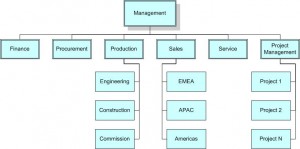 Project management as a core competency and strong department. Quit with functional specialists who lead the projects at the side. Project management needs full attention on planning, coordination and leadership – actually same as with corporate management. Time and objective conflicts of two hearts in the project leader’s chest are poison for concentrating on the essentials. His “thinking” also needs to be project-driven, no longer product love struck. Everybody contributes his core competence, the engineer his functional knowledge, and the project manager his PM skills, for success of the total. Process models and best practices make it replicable and calculable.
Project management as a core competency and strong department. Quit with functional specialists who lead the projects at the side. Project management needs full attention on planning, coordination and leadership – actually same as with corporate management. Time and objective conflicts of two hearts in the project leader’s chest are poison for concentrating on the essentials. His “thinking” also needs to be project-driven, no longer product love struck. Everybody contributes his core competence, the engineer his functional knowledge, and the project manager his PM skills, for success of the total. Process models and best practices make it replicable and calculable.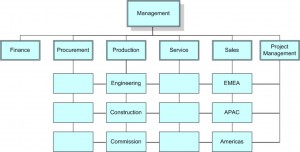 Functional and central departments as service providers for the projects. The previously gone through change in your corporate project culture will help you here. The engineers’ provisions will now not only serve for the product’s perfection but also for the whole task’s delivery to contract. Procurement will not only look at the terms and conditions but also (may be even sometimes with concessions supporting the project targets) at the reliability of delivery. Legal will probe partnership in collaboration; QM controls the project’s product quality and drives process quality (Continuous Improvement). HR will search for skills instead of positions, train for future project requirements, take care for a corporate identity among the employees, etc.
Functional and central departments as service providers for the projects. The previously gone through change in your corporate project culture will help you here. The engineers’ provisions will now not only serve for the product’s perfection but also for the whole task’s delivery to contract. Procurement will not only look at the terms and conditions but also (may be even sometimes with concessions supporting the project targets) at the reliability of delivery. Legal will probe partnership in collaboration; QM controls the project’s product quality and drives process quality (Continuous Improvement). HR will search for skills instead of positions, train for future project requirements, take care for a corporate identity among the employees, etc.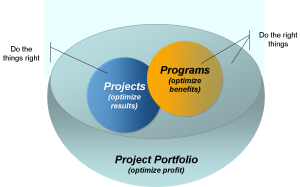
 Well, you won’t receive an assignment of responsibility for such a mega initiative if you didn’t show some real good performance and results as a PM before. But that’s insufficient in most cases for a programme if you are not familiar with additional PgM methodology and action to take.
Well, you won’t receive an assignment of responsibility for such a mega initiative if you didn’t show some real good performance and results as a PM before. But that’s insufficient in most cases for a programme if you are not familiar with additional PgM methodology and action to take.

 Those basics include:
Those basics include: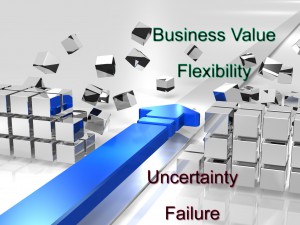 If the money is earned in projects their margin is superior to the simple revenue of the single departments and plants. But it needs a re-built of existing hierarchies, responsibilities, incentives, mind sets and priorities etc. to transform even a project supporting organization into one well aligned to a project business.
If the money is earned in projects their margin is superior to the simple revenue of the single departments and plants. But it needs a re-built of existing hierarchies, responsibilities, incentives, mind sets and priorities etc. to transform even a project supporting organization into one well aligned to a project business.